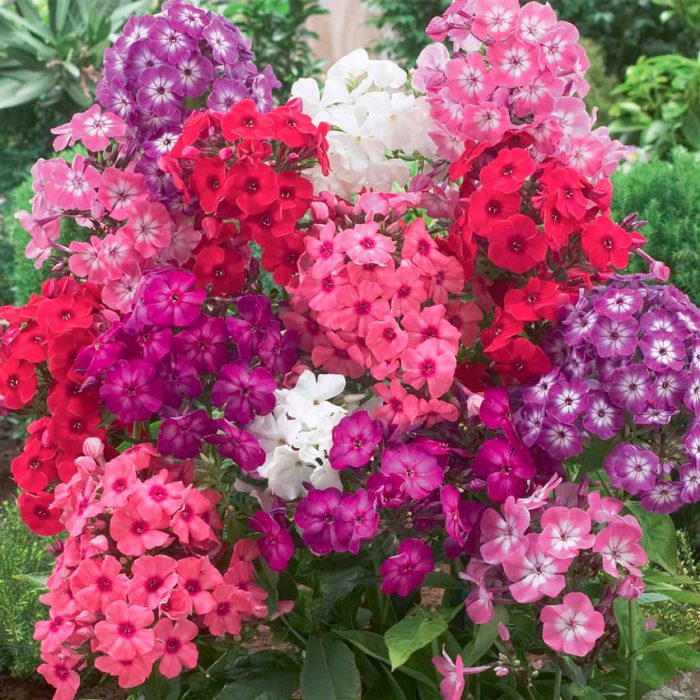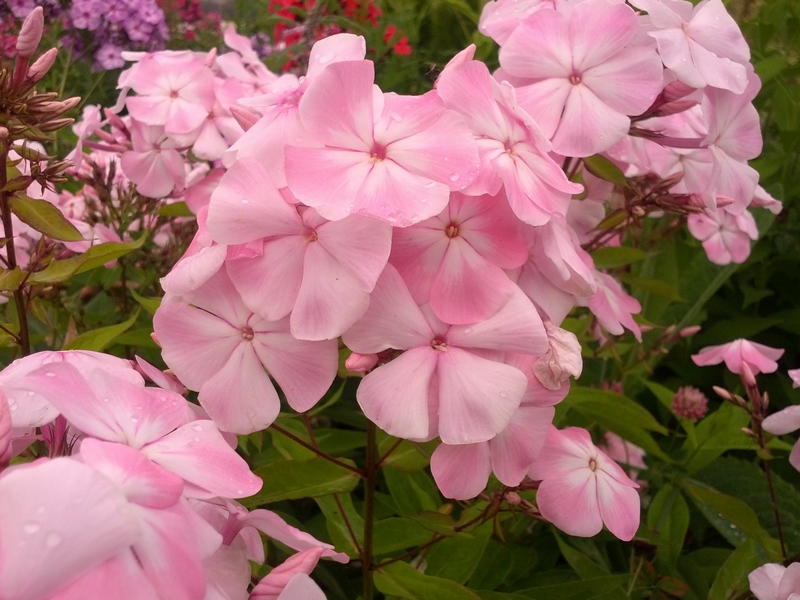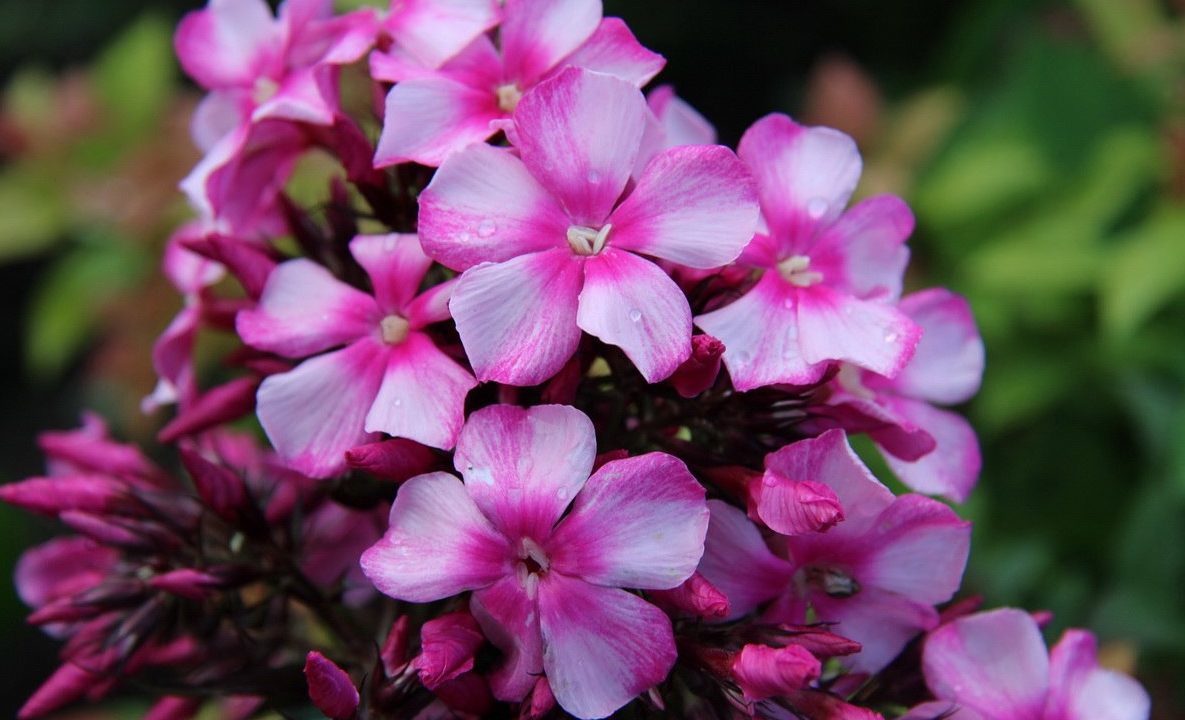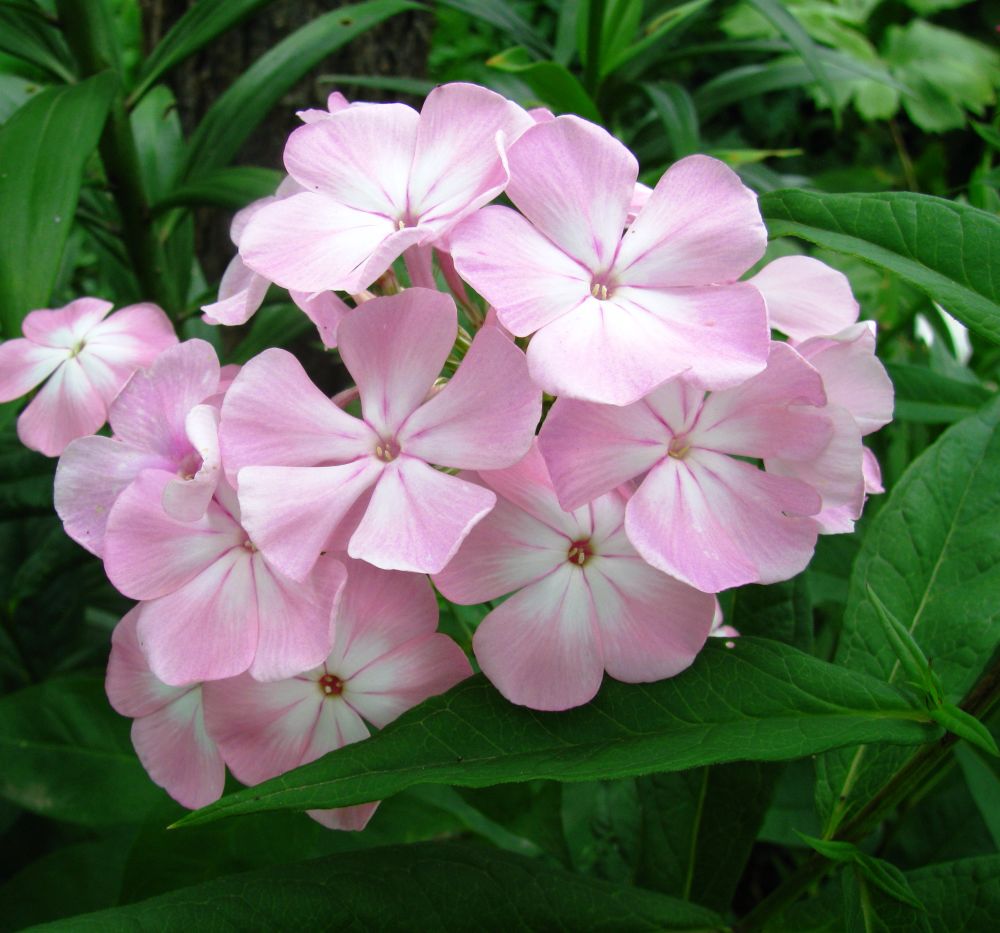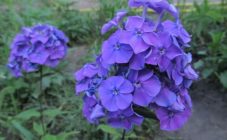Content:
Phlox are flowers that will decorate the site until late autumn. They are good from all sides: they have a pleasant aroma, and flowering is long, and a minimum of effort will be needed to care for them. To date, there are more than 85 varieties of them. But initially they were exclusively red, for which they received the name, which in translation means "flame".
On the territory of the Russian Federation, in the wild, there is only one type of phlox - Siberian. All other varieties are imported from North America, which is considered the birthplace of the flower. Most phlox are perennial plants, but there are also annual species. The most popular varieties of phlox are:
- Phlox Apple blossom;
- Subulate;
- Drummond;
- Spread out.
Phlox Description Apple Blossom
Phlox Apple blossom is a shrub-type plant, reaching a height of 1.5 meters. This type of phlox is perennial. The flowers are up to 5 cm in diameter, delicate pink in color, with a pronounced center. Inflorescences are umbellate, dense. Leaves are rich green, with a smooth surface. During the season, a powerful root system is formed, which is located near the surface of the earth. The roots have many branches that can go deeper, but the bulk of the roots does not go deeper than 15 cm.
It is advisable to plant phlox separately from other plants, since it is very easy to suppress it. When competing for sunlight, moisture and oxygen, it is often not phlox that wins. A variety with good frost resistance. It is better to plant plants on a small hill. This will protect them from the proximity of groundwater, prevent the root system from flooding the precipitation, and provide the required amount of sunlight. With a lack of sun, phlox blooms much poorer, the color is not so saturated and plentiful. The variety is resistant to many diseases and pests.
Features of growing crops
Phloxes are not pretentious about the soil on which they grow. They will develop in any soil, but the brightest and most exuberant flowering can be achieved by planting them in light, loose and nutritious soil. It is recommended to carefully choose the neighbors of this flower. Phlox prefers to grow separately from anyone, as he loves moisture, sunlight, and other plants can clog him.
Phlox sits in spring and autumn. Spring planting begins as soon as the snow melted and the soil warmed up a little. In central Russia, this is the period from mid-April to mid-May. In autumn, phloxes are planted in the first and second decade of September. When planting in autumn, the stems of the plant must be pruned.
When planting phloxes in open ground, it is necessary to adhere to a distance of 60 cm. The fact is that this shrub grows very wide. A hole for the bush is dug to a depth of 20 cm. When planting, the roots are straightened. In the planting hole, when planting a flower in spring, you can add a small amount of ash. It gives the plant strength and endurance. If phlox Apple Blossom is planted in autumn, you do not need to add any fertilizers.
Phloxes need regular watering. Also, the land next to the plant must be loosened, weeds removed.Phloxes Apple blossom can grow in one place for about 10 years, delighting every year with their beautiful flowers. After this time, the bush needs to be divided. Fertilize the soil under phlox annually. For this, both organic and mineral fertilizers are well suited.
Phlox Apple blossom does not need a garter, as the variety is not considered tall. It can reach a height of about 1.5 meters, but most often its average height is 1 meter.
Despite the fact that phlox is considered a winter-hardy crop, it is recommended to cover it. It can withstand temperatures down to -20 ° C frost. But, if the temperature drops below, the root system will die. This is provided that there is no snow in such a frost. With a snow layer of 30 cm, phlox roots are able to calmly tolerate a temperature of -35 ° C.
There are many ways to reproduce this crop. The most common are:
- Cuttings;
- Reproduction by layering;
- Seed method.
Cutting phlox apple blossom can be done in early summer. For this, young shoots are taken that did not have time to stiffen, cut off and planted in a container with a peat substrate. The container is placed in partial shade, and the substrate is well sprayed with water. The root system of cuttings will form in a month. After the roots appear, the cutting can be planted in a permanent place.
When propagating by layering, the lowest branches of the bush are taken and buried in the prepared grooves. Sprinkle on top with a mixture of peat and sand. At the base of the branch, you can make a cut into which a match is inserted. This will allow the plant to root quickly and efficiently.
With the latter planting method, seeds are planted in peat cups at the end of winter. The containers must be covered with a greenhouse film. When the first shoots appear, the film must be removed. The sprouts should not be allowed to stretch strongly in height. In the last decade of May, the sprouts are planted in their permanent habitat.
Panicled phlox The apple tree is resistant to many diseases, but some of them can still attack the plant. The most common diseases of apple phlox are:
- Powdery mildew;
- Rust;
- Leaf spot;
- Nematode;
- Variegatedness.
Powdery mildew, rust and mottling are fungi that develop in high humidity. Symptoms are white or brown spots that appear on the green leaves of the plant and grow and merge over time. At the last stage of the disease, the plant dies. To treat the disease, the affected leaves must be removed from the plant, and it must be treated with preparations with a high copper content. For preventive purposes, Bordeaux liquid has proven itself well.
The nematode causes defects in the external development of the plant. With the disease, curvatures appear on the main stem, twisted leaves, etc. There is no cure for this disease. If it hits a flower, the latter is dug up and destroyed. But for preventive purposes, you can add straw manure to the soil in which Apple phlox grows.
Variegation is an infection that affects the flower petals of a plant. This disease is capable of destroying all phloxes on the site in a short period of time. At the first signs of an infectious disease, the affected phloxes are dug up and destroyed, so that a mass infection of flowers does not go.
Advantages and disadvantages of the variety
This type of agriculture has more advantages than disadvantages. Among the advantages of growing Apple Phlox are the following:
- Winter hardiness;
- Increased immunity;
- Unpretentious care;
- Exuberant and long flowering;
- Gorgeous aroma, etc.
This plant has no disadvantages.With proper phlox care, they will decorate the site for many years and delight the gardener with gorgeous flowering until mid-autumn.
